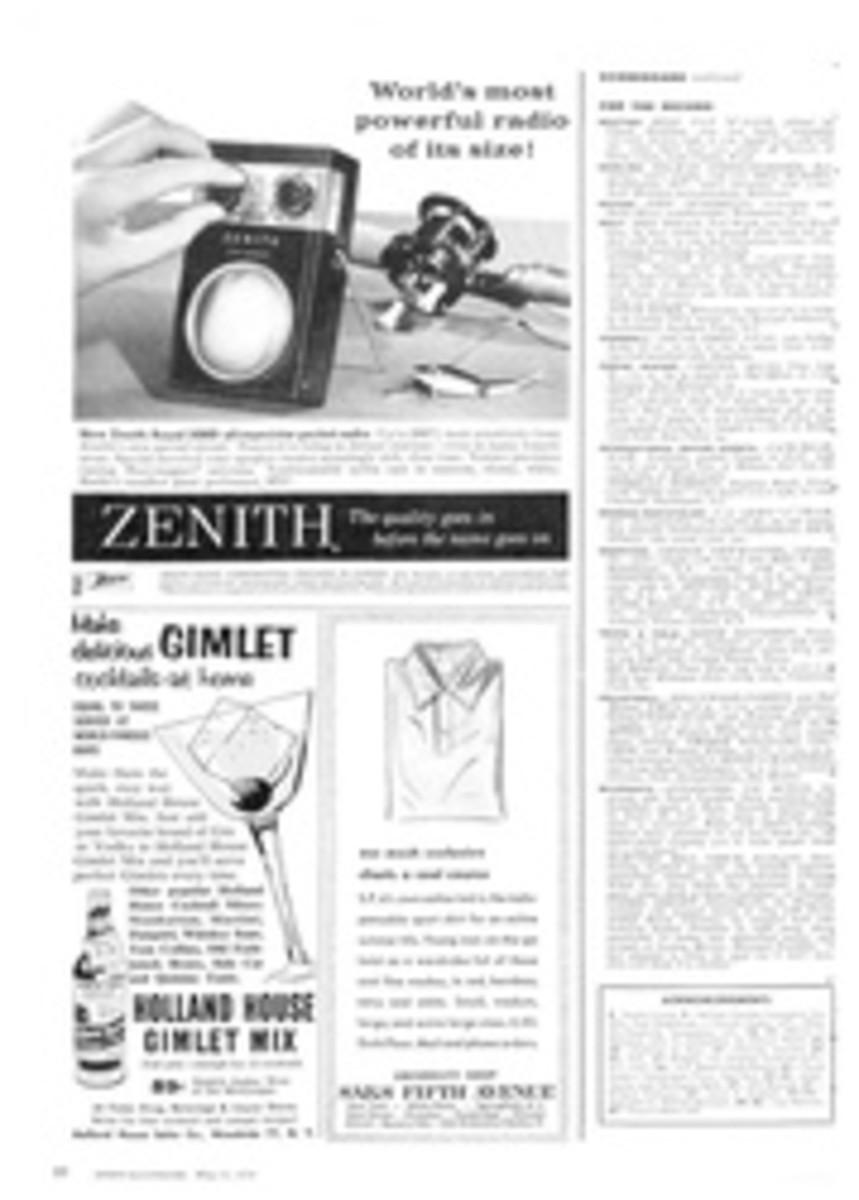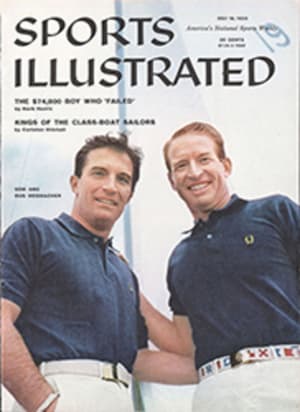
The Midwest has it
At the far western edge of the North American continent, separated from the effete East and the rest of the United States by mountains, deserts and inclination, lies a never-never land called California. It is inhabited by Kim Novak, two professional football teams, two professional baseball teams, sundry sun-baked residents and the fastest spring runners on the continent. The sun shines on all of these people most of the time and life is pleasant and only an occasional rumor of unrest seeps over the mountains to disturb the equanimity of the residents. When this happens, usually the residents turn over, spread another layer of suntan oil on a brown epidermis, and contemplate the navel of a California orange. Only when the news from across the mountains intimates that 1) the sun shines as bright in Florida or elsewhere, 2) more is happening in New York, or 3) somewhere someone can run faster than a Californian are the suntanned natives of the Pacific slopes markedly aroused.
They take justifiable pride in their track and field talent. The University of Southern California in Los Angeles has doubtless, year in and year out, the strongest track team in the country. Unfortunately, the USC track team suffers now and again for the sins of the USC football team and so is ineligible to prove its strength in the NCAA championships. However, unnoticed by the rank and file of track fanatics in southern California, the balance of track strength has gradually shifted back over the mountains and across the desert into the vast Midwest. When this was hinted at in SI (May 4), the Californians cast aside their suntan oil, threw away the oranges and hollered loud and long (see 19TH HOLE). The gist of their complaint was that SPORTS ILLUSTRATED had, as one critic put it very pleasantly, "buried its nose in a Martini and never looked west of the Hudson River."
Jack Tobin, a knowledgeable track writer who works for the Los Angeles Times, reported that California track nuts (sic) expect to see their state provide more members for the U.S. team against Russia than all the rest of the United States put together.
VIEW FROM THE EAST
Well, from east of the mountains it looks different. Judging by past and current performances, the University of Kansas has the strongest track team in the country and it would be the strongest track team even if USC were not on probation. In Bill Alley, Ernie Shelby and Charlie Tidwell the Kansans have three nearly certain first-place winners, and for the first time Coach Bill Easton has depth to match even the vaunted USC depth. The Trojans won the NCAA competition last year, beating Kansas by 8 points, but won only one outright first place in doing so.
In AAU competition, which will determine the personnel of the U.S. team against Russia, the outlook for California is not nearly so bright as it appears to the people on the sunny side of the mountains. It seems unlikely that the Pacific Coast will provide anything like half of the team, considering that only first- and second-place winners in the AAU national championships will be included.
Among the men that the Pacific Coast will probably provide are Charlie Dumas in the high jump; Max Truex and Jim Grelle in the distance races; Dallas Long (of Phoenix, Ariz.) and Parry O'Brien in the shot; Rink Babka in the discus; Bud Held in the javelin; possibly Ernie Cunliffe of Stanford in the half mile; and Rafer Johnson in the decathlon. The sprints are dominated by Texans, except for San Jose State's Ray Norton, a native of Tulsa; the quarter by one Texan (Eddie Southern) and a trio of Midwesterners (Glenn Davis, Dave Mills and Willie Atterberry). Ed Moran of Penn State appears to be the best native-bred miler. In the javelin, Kansas' Alley is far and away ahead of his competition. A pair of Oklahoma State pole vaulters both cleared 15 feet May 2, and Don Bragg, the ex-Villanovan, is in the best form of his career, with a world indoor record to his credit already. California's Bob Gutowski is the world record holder but has been off form. The hammer is the exclusive bailiwick of Harold Connolly, a Bostonian who is now living in California. Davis, Southern and a relative newcomer from New Mexico named Dick Howard are the class of the 400-meter-hurdles field, and the other hurdle races are paced by Southerners and by Kansas' Tidwell.
All in all, the Californians' claim that they will place more than half of the members of the U.S. team is farfetched indeed.
In the AAU meet last year 14 West Coast athletes qualified for the 41-man U.S. team which competed against Russia in Moscow. It's doubtful that the Pacific Coast can match that one-third ratio this year, let alone reach 50%.
PHOTO
ERNIE SHELBY, Kansas' great jumper, captains team favored for NCAA title.

